Abstract
Methods were compared for teaching severely retarded boys to discriminate the position of a 0.75-in. black square and to press the response key closest to it. Seven boys were given trial-and-error training; one learned the task. The six boys who did not learn were presented with a program of graduated stimulus changes. All but one acquired the performance, and he was under appropriate control during the program. When he reached the criterion stimuli, he reverted to a position-based response learned during trial-and-error training. Six similar subjects were presented with graduated stimulus training alone. All six learned the criterion discrimination with few or no errors. Both groups were tested for retention of the criterion performance 35 days after training was completed. Two boys who had near-perfect criterion discrimination performances showed no signs of retention after 35 days. These boys had a history of trial-and-error training.
Full text
PDF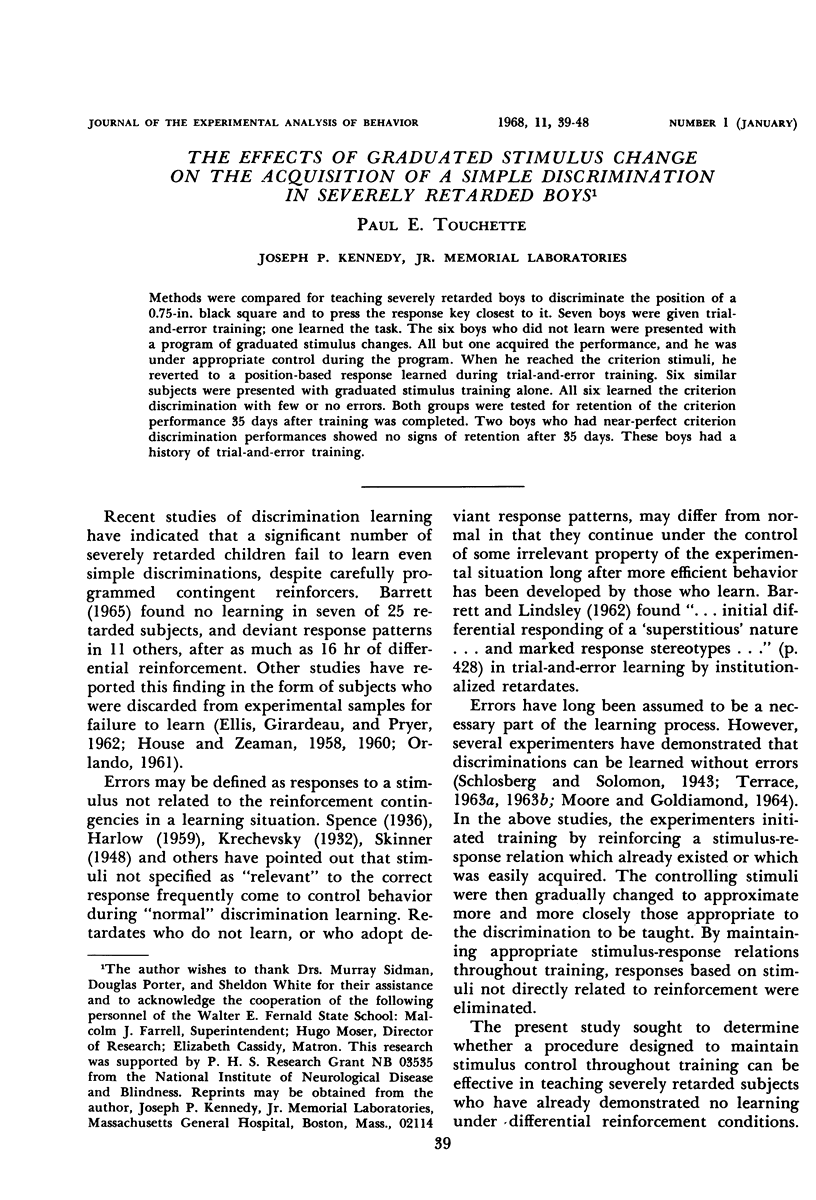
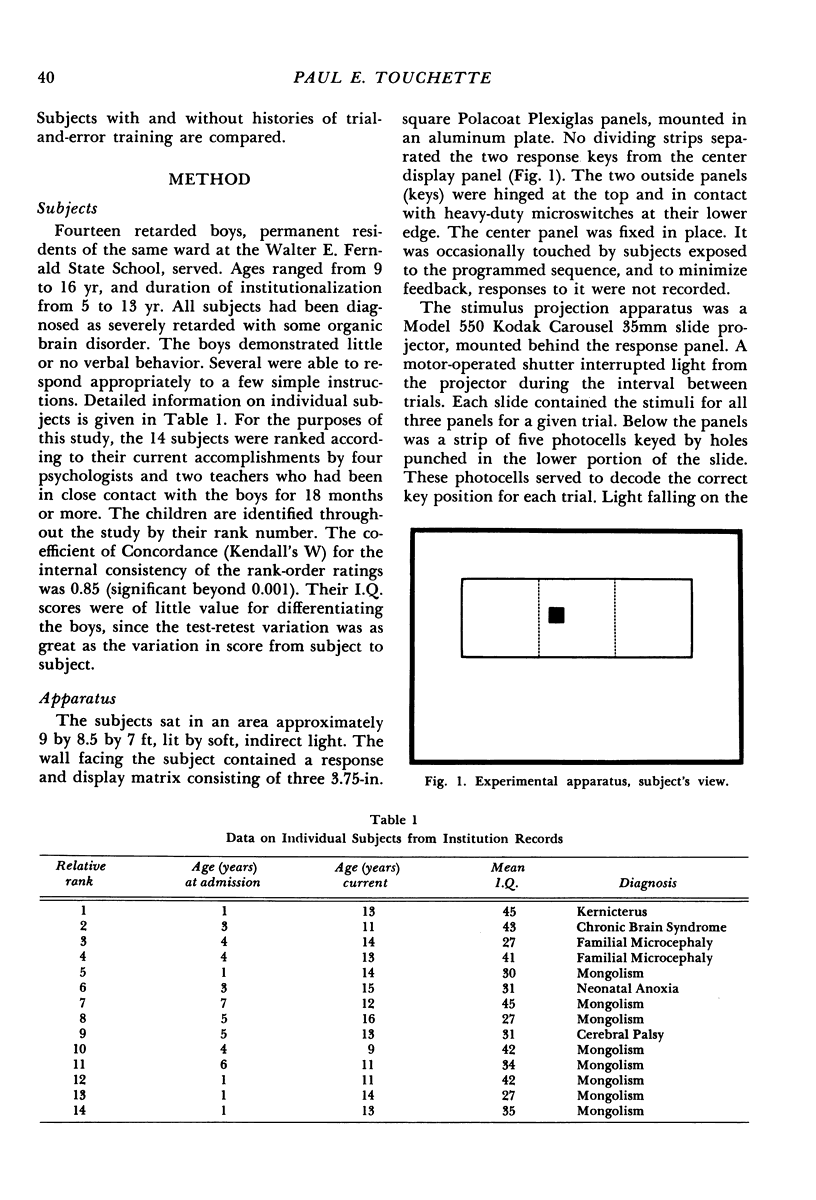


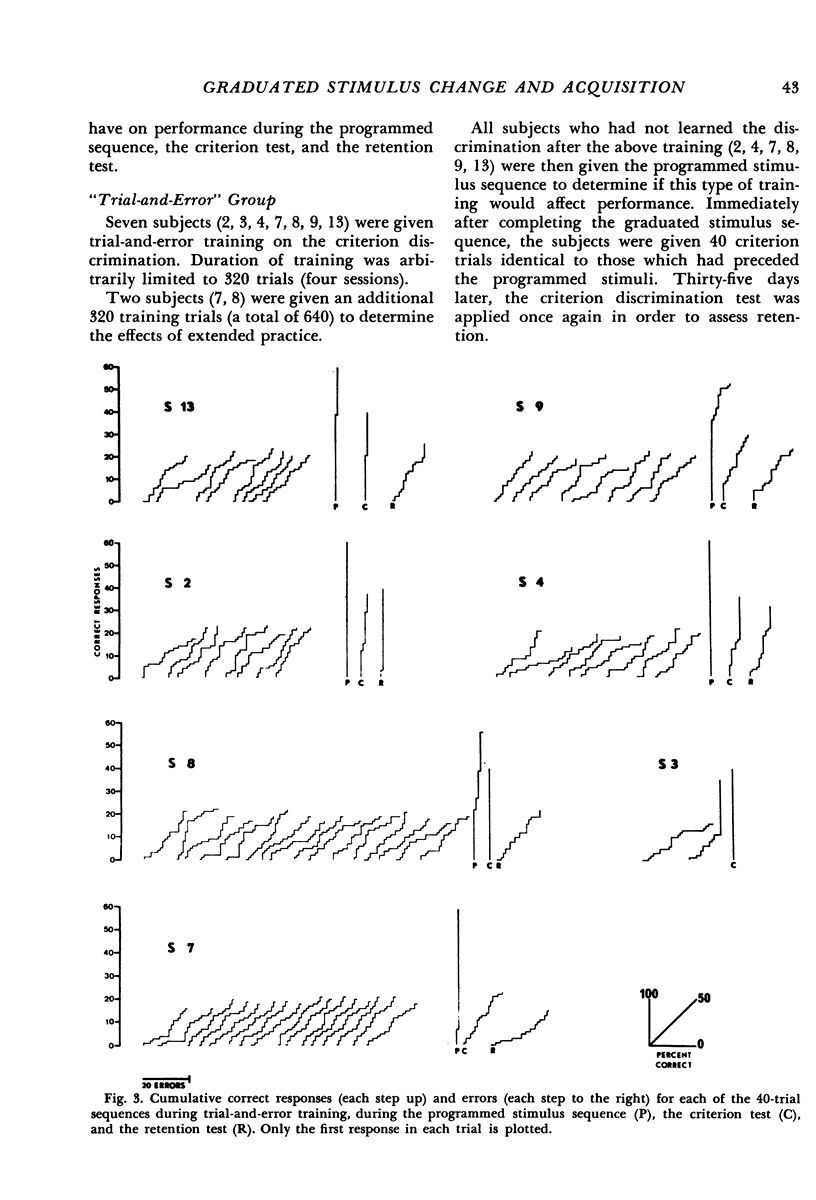
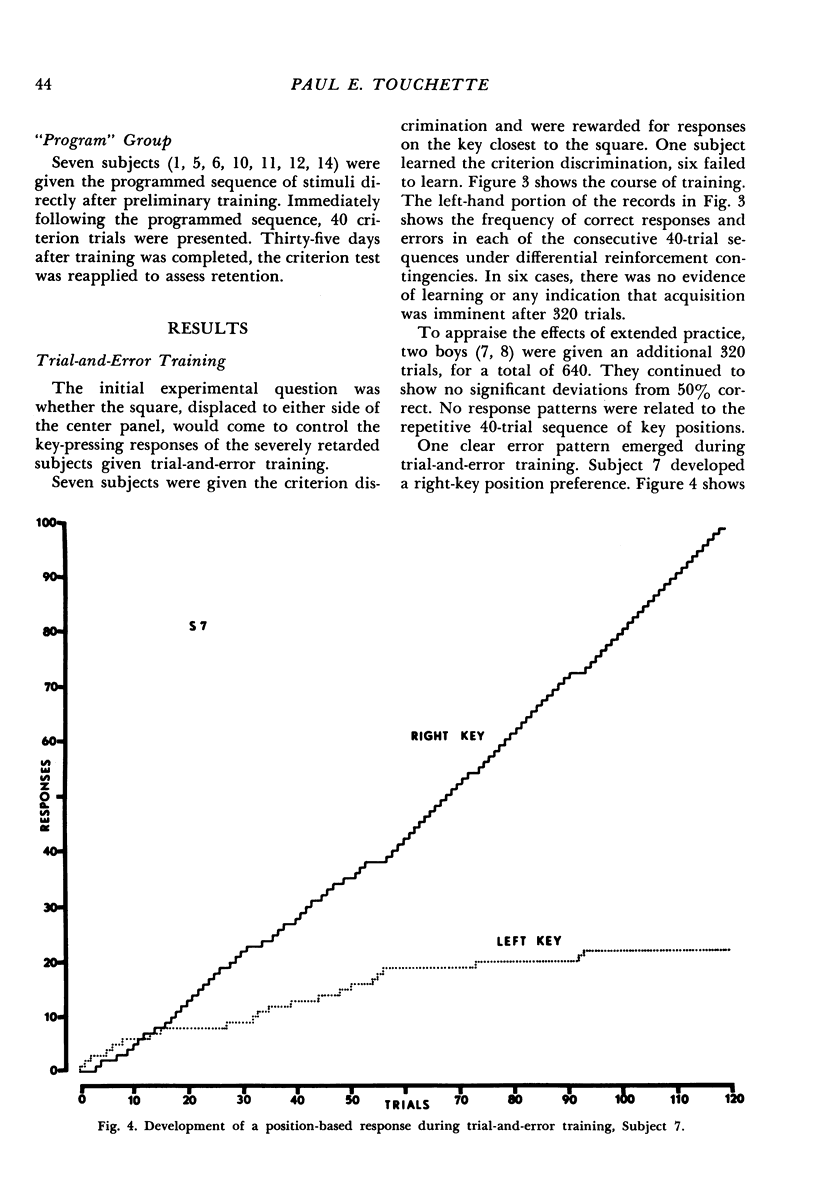
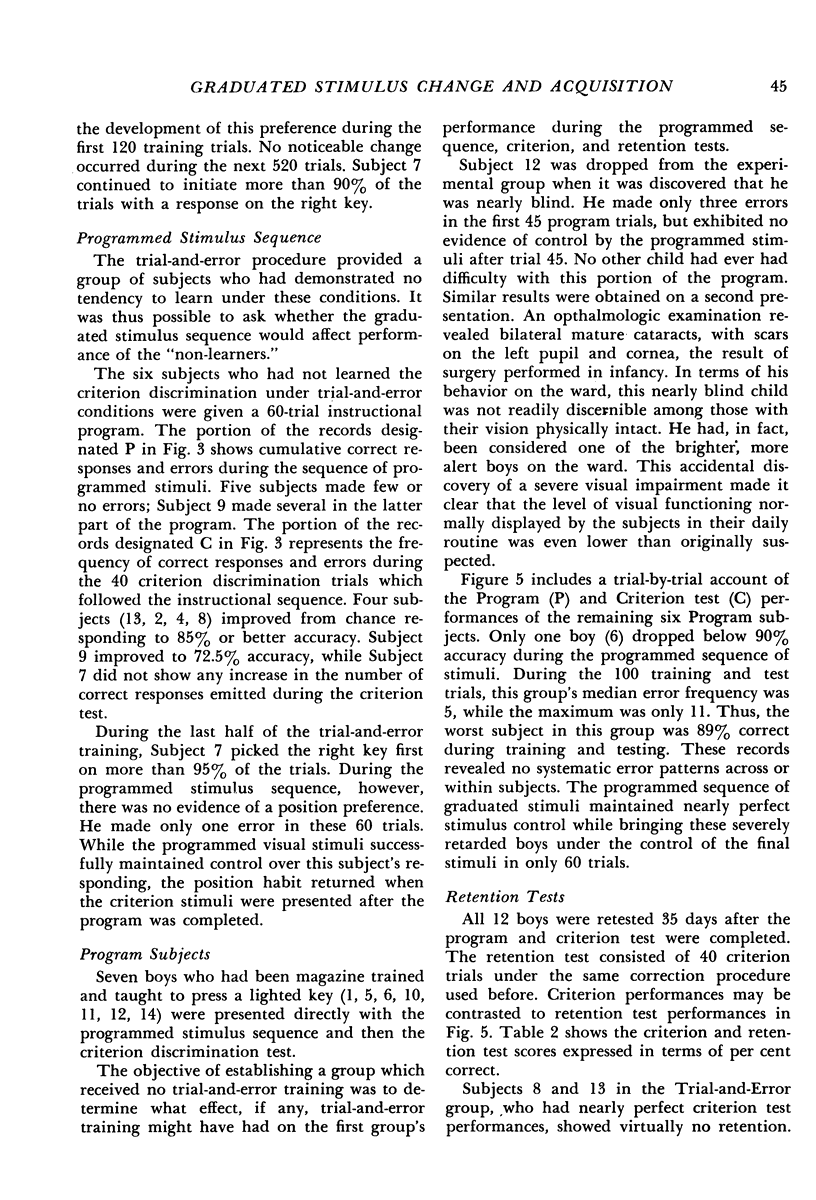
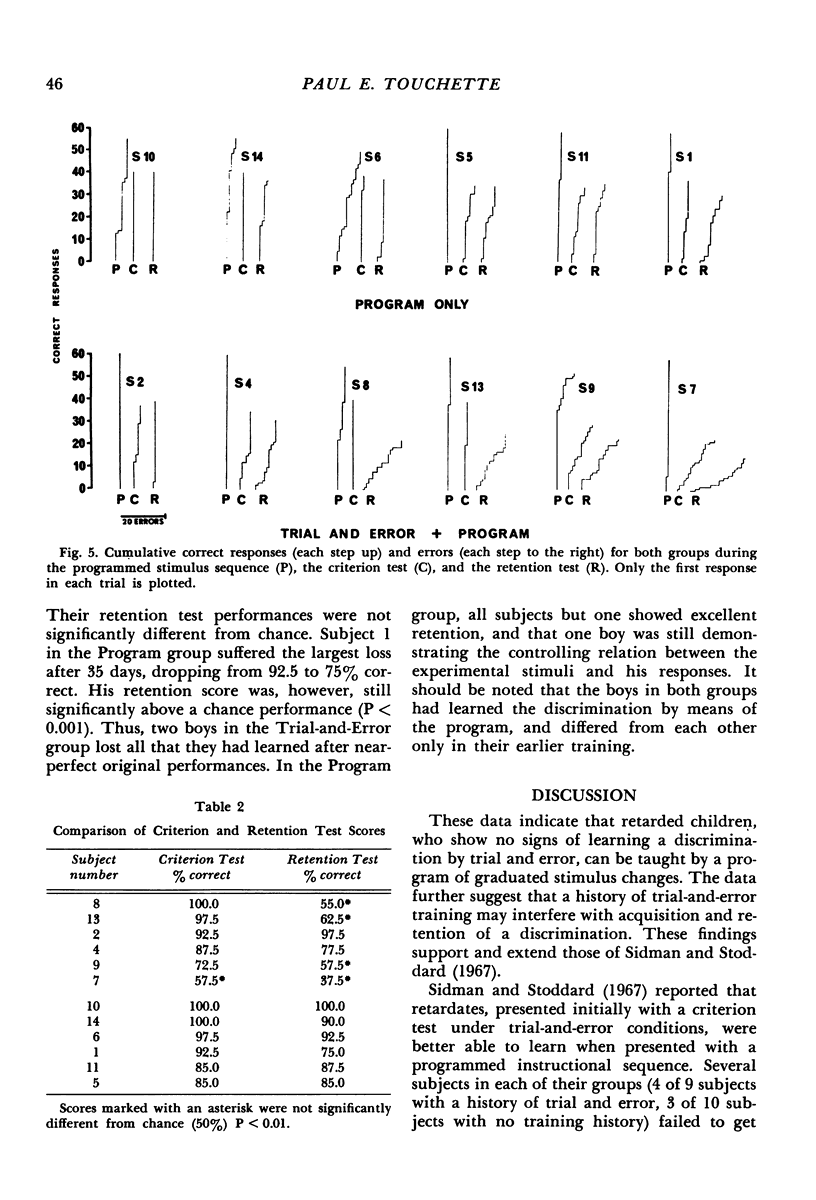
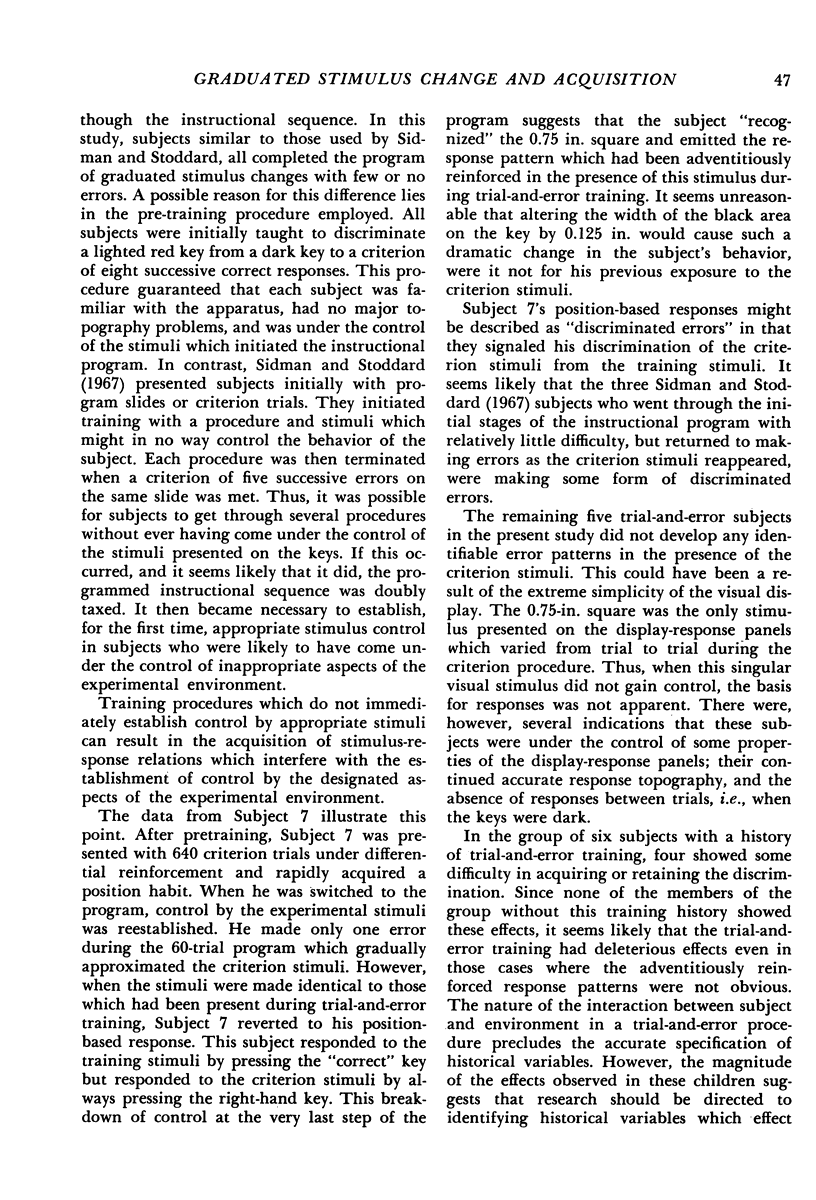

Selected References
These references are in PubMed. This may not be the complete list of references from this article.
- BARRETT B. H., LINDSLEY O. R. Deficits in acquisition of operant discrimination and differentiation shown by institutionalized retarded children. Am J Ment Defic. 1962 Nov;67:424–436. [PubMed] [Google Scholar]
- Barrett B. H. Acquisition of operant differentiation and discrimination in institutionalized retarded children. Am J Orthopsychiatry. 1965 Oct;35(5):862–885. doi: 10.1111/j.1939-0025.1965.tb00465.x. [DOI] [PubMed] [Google Scholar]
- HIVELY W. A MULTIPLE-CHOICE VISUAL DISCRIMINATION APPARATUS. J Exp Anal Behav. 1964 Sep;7:387–389. doi: 10.1901/jeab.1964.7-387. [DOI] [PMC free article] [PubMed] [Google Scholar]
- HIVELY W. Programming stimuli in matching to sample. J Exp Anal Behav. 1962 Jul;5:279–298. doi: 10.1901/jeab.1962.5-279. [DOI] [PMC free article] [PubMed] [Google Scholar]
- HOUSE B. J., ZEAMAN D. Visual discrimination learning and intelligence in defectives of low mental age. Am J Ment Defic. 1960 Jul;65:51–58. [PubMed] [Google Scholar]
- HOUSE B. J., ZEAMAN D. Visual discrimination learning in imbeciles. Am J Ment Defic. 1958 Nov;63(3):447–452. [PubMed] [Google Scholar]
- MOORE R., GOLDIAMOND I. ERRORLESS ESTABLISHMENT OF VISUAL DISCRIMINATION USING FADING PROCEDURES. J Exp Anal Behav. 1964 May;7:269–272. doi: 10.1901/jeab.1964.7-269. [DOI] [PMC free article] [PubMed] [Google Scholar]
- MORSE W. H., SKINNER B. F. A second type of superstition in the pigeon. Am J Psychol. 1957 Jun;70(2):308–311. [PubMed] [Google Scholar]
- REYNOLDS G. S. Attention in the pigeon. J Exp Anal Behav. 1961 Jul;4:203–208. doi: 10.1901/jeab.1961.4-203. [DOI] [PMC free article] [PubMed] [Google Scholar]
- Sidman M., Stoddard L. T. The effectiveness of fading in programming a simultaneous form discrimination for retarded children. J Exp Anal Behav. 1967 Jan;10(1):3–15. doi: 10.1901/jeab.1967.10-3. [DOI] [PMC free article] [PubMed] [Google Scholar]
- TERRACE H. S. Discrimination learning with and without "errors". J Exp Anal Behav. 1963 Jan;6:1–27. doi: 10.1901/jeab.1963.6-1. [DOI] [PMC free article] [PubMed] [Google Scholar]
- TERRACE H. S. Errorless transfer of a discrimination across two continua. J Exp Anal Behav. 1963 Apr;6:223–232. doi: 10.1901/jeab.1963.6-223. [DOI] [PMC free article] [PubMed] [Google Scholar]


